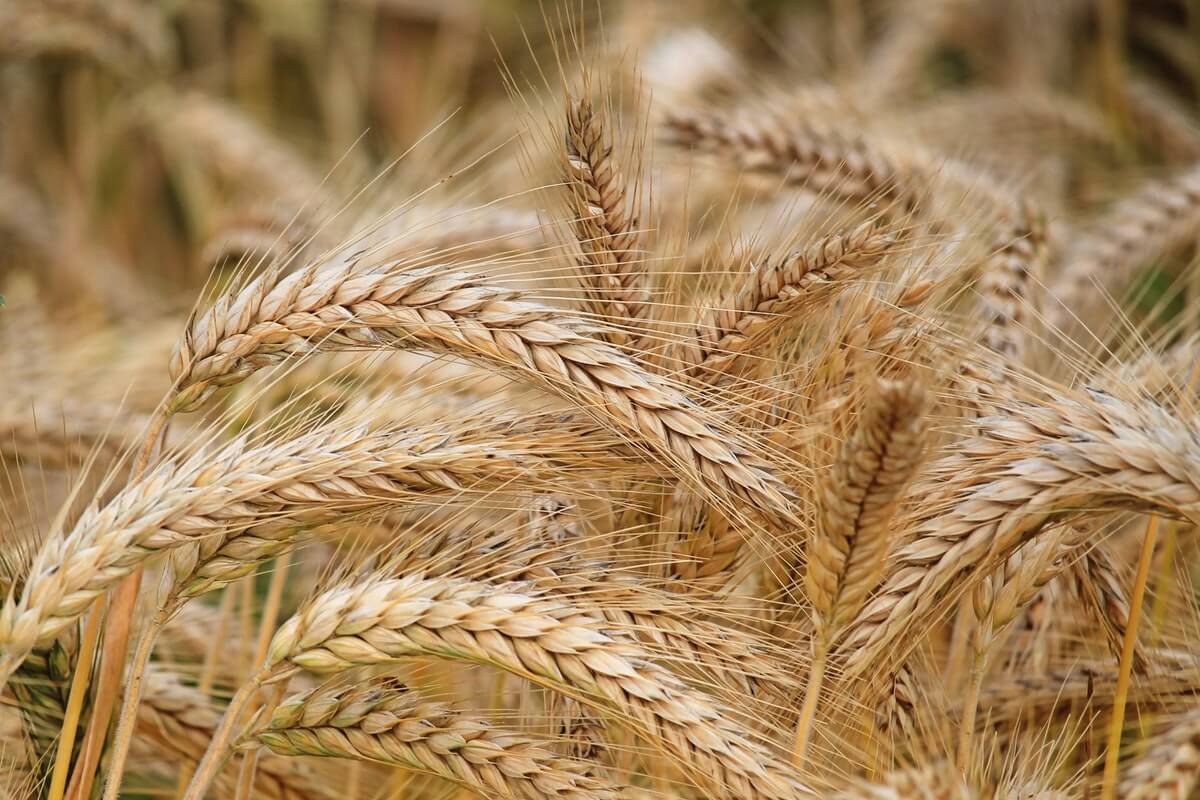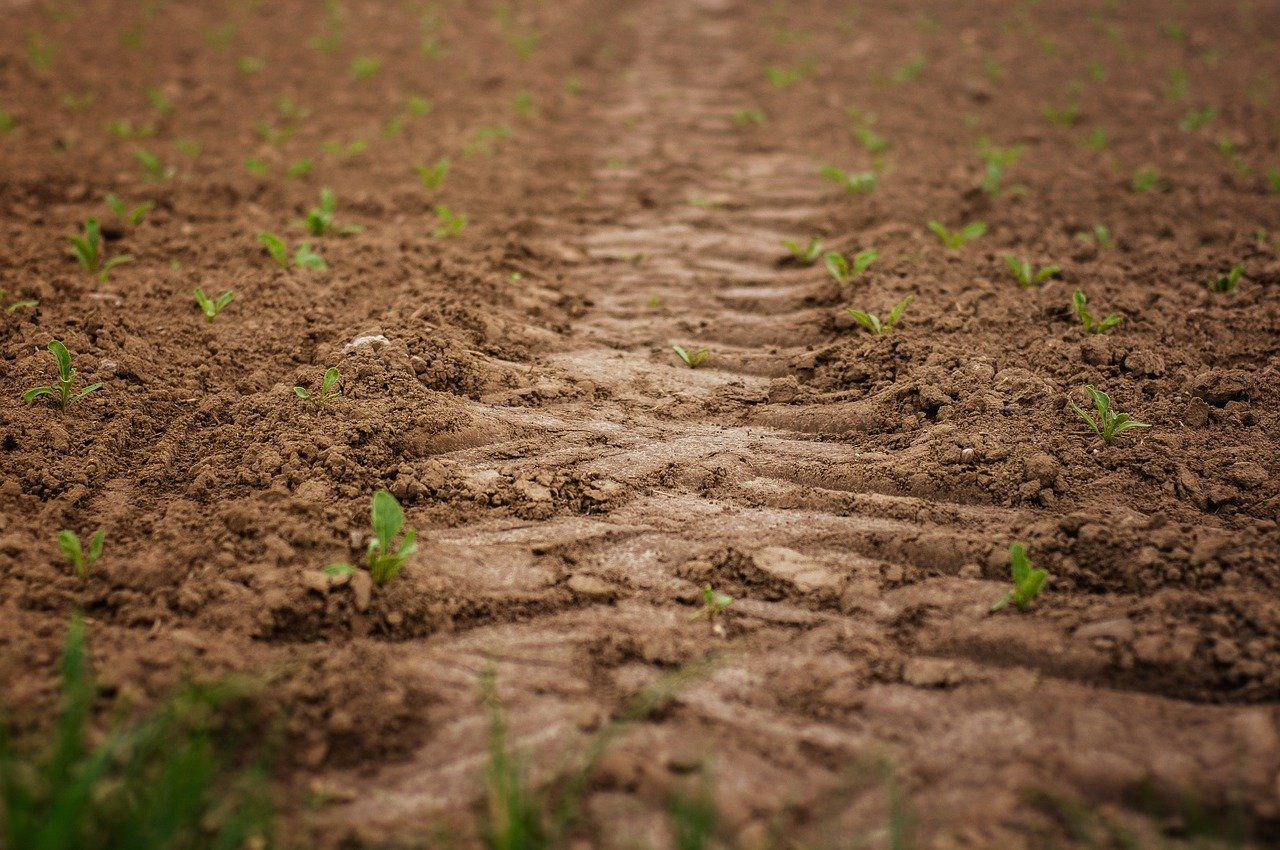Wheat does best in young soil. That is soil that has not been depleted by over planting, excessive exposure to harsh elements or simple neglect in the form of lack of soil amendments. Wheat relies on a rich mixture of soil nutrients and micronutrients, including mineral components (e.g. mica) to provide complete nourishment. Read on to learn more about where is the best place to grow wheat, and what is the best type of soil for wheat farming.
What You'll Learn Today
Where Is The Best Place To Grow Wheat?

The best soil for growing wheat is soil that is loamy and well draining. Loam is soil that has the right combination of clay, silt and sand to provide a proper balance of moisture retention and moisture release.
Generally speaking, loamy soil is made up of a combination of equal amounts of each of these ingredients.
Another important quality of loamy soil is that it allows good air circulation within the soil. Soil that is too compacted retains too much moisture and doesn’t allow air to flow through.
When this happens, plant roots become waterlogged and subject to root rot. This can happen with soil that has too much clay.
On the other hand, soil that has too much sand may allow water to wash through to freely. This results in wheat plants not getting enough water and not getting enough nutrients. The reason for this is nutrients wash out of the soil as water rushes through.
Silt and organic matter lighten the soil and work to hold the other components of the soil together. Organic matter also helps retain moisture and conveys nourishment to plants.
In addition to these problems, unbalanced soil also causes problems with pH levels, which have a strong effect on a plant’s ability to uptake nourishment.
How Does Soil Become Depleted?
The structure of soil changes over time. Years of sun, wind and rain rob nourishment from even the best of soils. Plants growing in soil consume nourishment and use up organic matter.
This is why it’s important to rotate crops and to replenish organic matter through soil amendments such as manure, seasoned compost and the like on a regular basis.
How Can You Correct Poor Soil?

1. Use Soil Conditioners
In soil that has lost its texture and/or nutritional value, it can be very hard to grow wheat or any other cereal crop.
When this is the case, it’s important to make good use of soil conditioners to rejuvenate the soil. Both natural and synthetic soil conditioners can be of value.
Some examples include:
- Organic Polymers
- Gypsum
- Compost
- Manure
2. Rotate Crops
Additionally, planting rotation crops such as soybeans, clover and other cover crops which are often known as green manure, can be a good way of adding nitrogen to the soil and giving it a rest from the demands of wheat.
3. Use The No-till Method Of Planting
Modern farmers are also learning more and more that disturbing the soil can actually be quite detrimental to it.
Excessive plowing and driving back and forth across it with heavy machinery can negatively impact the size of the particles in your soil. Over time, soil that is severely overworked will simply collapse and be unusable.
This is why so many farmers today are using crop rotation coupled with the no till method of growing.
Although it may seem counterintuitive to simply leave your soil undisturbed and allow it to collect a thick layer of natural crop residue, the fact is this is exactly as nature intended.
Read here on planting of winter wheat.
4. Encourage Friendly Fauna In The Soil
Soil is fragile, and it is always hard at work under the surface. When we turn it and expose it to the light and the elements, we do it damage.
Simply amending the soil frequently with natural organic matter, encouraging beneficial fauna in the soil and allowing your crops to grow in a natural way will ultimately yield bigger and better crops.
Frequently Asked Questions

Is it possible to grow wheat in poor soil?
Soil that is poor in nutrients will probably not negatively impact wheat growth, but soil with poor drainage is not acceptable.
Strive to develop loamy, well-draining soil to ensure good air circulation to the roots and lessen the possibility of mold growth.
Take care not to over-fertilize or use excessive amounts of rich amendments such as manure. Very rich, heavy soil that is rich in nitrogen can cause stunted wheat growth.
Should you plant wheat in sandy soil?
Although sandy soil is typically light and well-draining, it may dry out too quickly for good wheat growth. Furthermore, sandy soil tends to leach away nutrients.
If your soil is very sandy you may wish to amend it with organic matter, such as composted tree bark, lawn and garden clippings, manure, straw or wood chips.
Is soil texture more important than soil nutrient content when growing wheat?
Wheat is not a hungry crop, so texture really is of the utmost importance. Soil with poor texture can negatively impact your plants growth, the size of the leaves, the amount of wheat the plants are able to produce and overall plant health and well-being.
Wheat is tolerant of many types of soil, but it does best in medium texture soil. Soil with high mineral content or a lot of peat is not desirable.
What is the best soil pH level for wheat?
Wheat likes a pH level of around 7. This is a neutral pH level. To prevent the soil from becoming too acidic for wheat, avoid using nitrogen fertilizers. Be sure to check the pH level of the soil before planting wheat.
Very often, agricultural soil becomes acidic because of past use of high nitrogen fertilizers. If you find that this is the case with your soil, you may be able to correct the situation by thoroughly incorporating agricultural limestone into the soil.
What can you do if salt levels are too high in your soil?
High sodium content is common in irrigated fields and can cause lots of trouble for young wheat plants. You may be able to correct sodium levels in soil by increasing potassium levels. This will help improve water movement and the delivery of nutrients throughout the plants tissues.
The Bottom Line
Wheat does best in balanced, loamy soil. Although it’s possible to use sandy loam and clay to grow wheat, in order to do so you must pay close attention to your drainage system and add amendments as needed to keep pH levels balanced.
Can I use fertilizers if the soil in my farm does not contain necessary nutrients for growing wheat?
Generally speaking, it is better to enrich your soil with organic matter than to use fertilizer. Before making amendments or using a fertilizer, have your soil tested to determine exactly what you need (if anything). Refer to this interesting bulletin from Michigan State University to get excellent overall knowledge about the nutrient needs of wheat crops.
Hahaha . Thank you.
Just going to have a go at wheat growing.
Yes in my small home garden.
Am an absolute idiot with regards to wheat. A friend offered the seeds.
balls